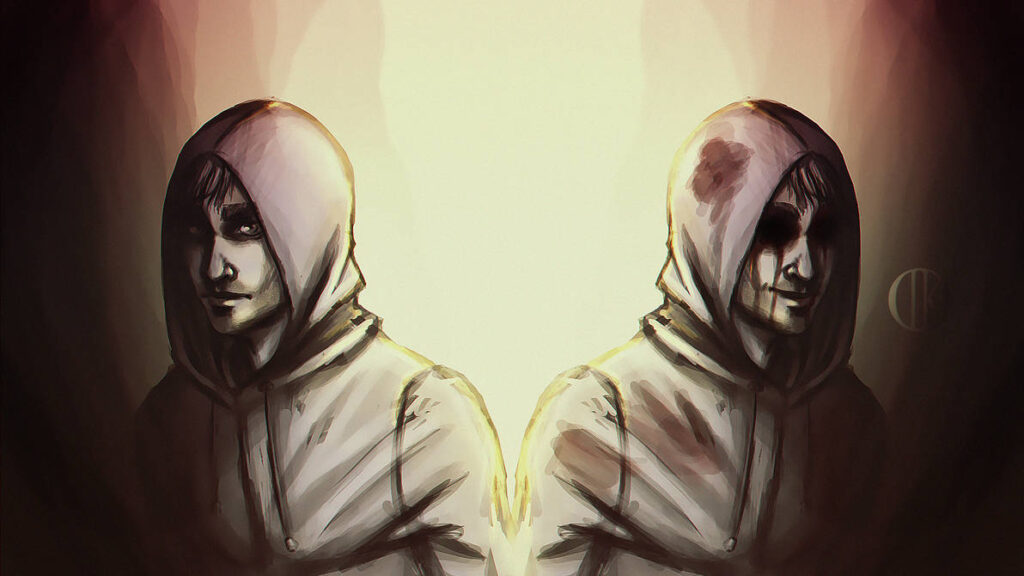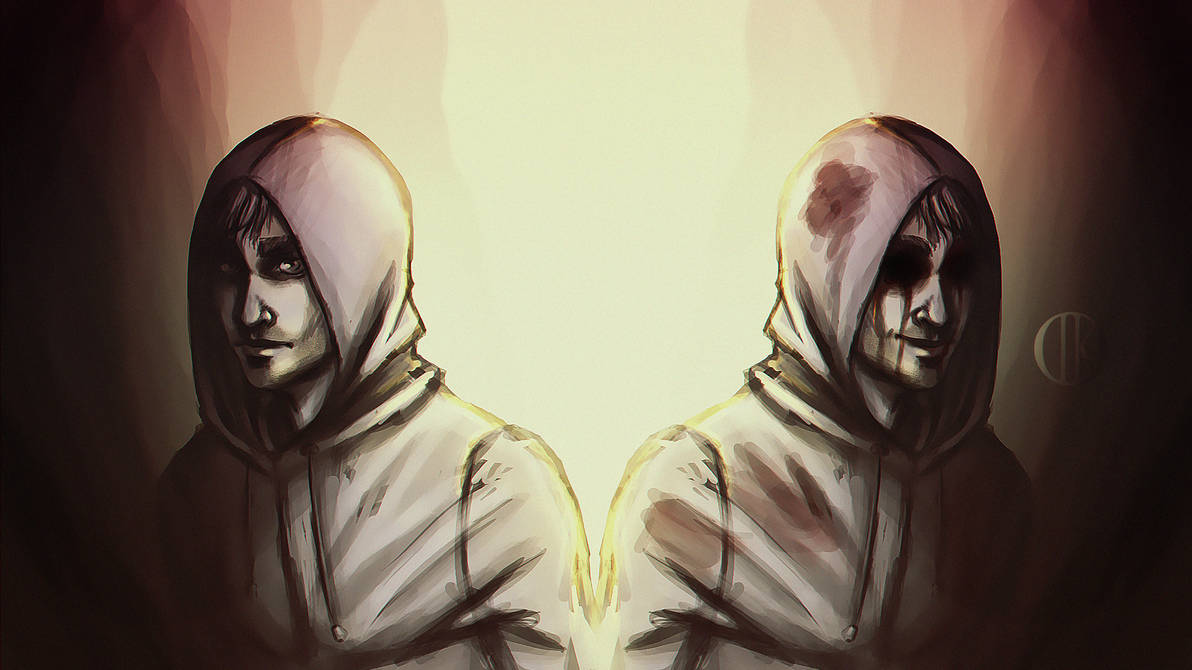
Unraveling the Trauma: Who is Simon Henriksson from Cry of Fear?
Cry of Fear, a psychological horror game developed by Team Psykskallar, plunges players into the nightmarish world of Simon Henriksson, a nineteen-year-old struggling with profound mental health issues. The game, initially a mod for Half-Life before becoming a standalone title, is renowned for its disturbing imagery, intense atmosphere, and deeply personal narrative. Understanding Simon from Cry of Fear requires delving into the game’s complex story, his psychological state, and the symbolic representation of his inner demons. This article aims to dissect the character of Simon from Cry of Fear, exploring his background, motivations, and the harrowing events that shape his reality.
The Premise of Cry of Fear and Simon’s Initial State
The game begins with Simon attempting to help a wounded man after a hit-and-run incident. This act of kindness quickly spirals into a horrific ordeal as Simon is struck by a car, leading to severe physical and psychological trauma. The story then transitions into Simon’s fragmented and distorted perception of reality. Players navigate through a bleak and hostile environment, battling grotesque creatures that are manifestations of Simon’s inner turmoil. It’s crucial to understand that Simon’s world is not necessarily a literal representation of reality but rather a reflection of his deteriorating mental state.
Simon initially appears as a vulnerable and somewhat relatable character. He is portrayed as someone who wants to do good, but circumstances constantly conspire against him. The accident is the catalyst that sets off a chain of events, pushing him further into despair and madness. The game masterfully uses its environment and enemies to symbolize Simon’s internal struggles with depression, anxiety, and self-loathing.
Simon’s Journey Through a Distorted Reality
As players progress through Cry of Fear, they witness Simon’s descent into madness. The environments become increasingly surreal and disturbing, reflecting the growing instability within Simon’s mind. The enemies encountered are not merely random monsters; they are symbolic representations of his fears, insecurities, and traumatic experiences. For example, the Sawer, a recurring enemy, can be interpreted as a manifestation of Simon’s self-destructive tendencies.
The narrative is presented in a non-linear fashion, further blurring the lines between reality and illusion. Flashbacks and hallucinations provide glimpses into Simon’s past, revealing snippets of his life before the accident and hinting at underlying issues that may have contributed to his mental state. These fragmented memories offer crucial context for understanding Simon’s present condition and the reasons behind his actions. The game also contains multiple endings, each offering a different interpretation of Simon’s fate and the true nature of his reality.
The Psychological Depth of Simon Henriksson
What sets Cry of Fear apart from many other horror games is its emphasis on psychological realism. Simon’s character is not simply a vehicle for jump scares and gore; he is a complex and deeply flawed individual struggling with genuine mental health issues. The game explores themes of depression, anxiety, social isolation, and suicidal ideation with a level of sensitivity and nuance rarely seen in the genre. Understanding Simon from Cry of Fear requires acknowledging the authenticity of his psychological struggles.
The game’s narrative is heavily influenced by psychological concepts and theories. The creatures and environments are often interpreted through a psychoanalytic lens, with each element representing a different aspect of Simon’s subconscious. For instance, the dark and claustrophobic environments can be seen as metaphors for Simon’s feelings of entrapment and hopelessness. The game’s use of symbolism and metaphor adds layers of depth to the narrative, inviting players to engage with the story on a deeper, more meaningful level.
Furthermore, the game’s use of inventory and limited resources enhances the feeling of vulnerability and desperation. Simon’s reliance on his cell phone for navigation and communication adds a modern and relatable touch, further grounding the story in reality despite its surreal elements. The combination of these elements creates a truly immersive and emotionally resonant experience.
The Role of Symbolism and Metaphor in Simon’s Story
Symbolism plays a crucial role in understanding Simon’s character and the events of Cry of Fear. The game is filled with visual and thematic metaphors that offer insights into Simon’s subconscious mind. The city of Silent Hill, for example, is not just a setting; it is a representation of Simon’s inner turmoil and the fragmented nature of his psyche. The creatures he encounters are manifestations of his fears, anxieties, and repressed emotions.
One of the most prominent symbols in the game is the book that Simon is writing. This book represents his attempt to make sense of his experiences and to find a way to cope with his trauma. The content of the book changes throughout the game, reflecting Simon’s evolving mental state. In some endings, the book plays a crucial role in determining Simon’s fate, highlighting the power of self-expression and the importance of confronting one’s inner demons. The fact that Simon from Cry of Fear is writing a book also symbolizes his attempt to take control of his narrative and to find meaning in his suffering.
Another significant symbol is the character of Purnell, who is heavily implied to be a manifestation of Simon’s own self-loathing and suicidal thoughts. Purnell represents the darkest aspects of Simon’s psyche and serves as a constant reminder of his failures and insecurities. The interactions between Simon and Purnell are often disturbing and unsettling, reflecting the internal conflict that Simon is battling.
Analyzing Simon’s Relationships and Motivations
Simon’s relationships with other characters, particularly Sophie, provide valuable insights into his motivations and desires. Sophie represents a symbol of hope and normalcy in Simon’s life. She is the object of his affection and the embodiment of everything he longs for but feels he cannot attain. The interactions between Simon and Sophie are often bittersweet, highlighting the contrast between his idealized vision of her and the harsh reality of his own existence. The game masterfully uses these interactions to explore themes of love, loss, and the struggle to find meaning in a world filled with suffering.
Simon’s motivations are complex and often contradictory. He is driven by a desire for connection and acceptance, but he is also plagued by feelings of self-doubt and inadequacy. His actions are often impulsive and self-destructive, reflecting his inner turmoil and his inability to cope with his trauma. Understanding Simon’s motivations requires acknowledging the conflicting forces that are constantly pulling him in different directions.
The Impact of Cry of Fear and Simon’s Legacy
Cry of Fear has had a significant impact on the horror game genre, particularly within the indie development scene. Its emphasis on psychological realism, its disturbing imagery, and its emotionally resonant narrative have resonated with players around the world. The game has been praised for its unique atmosphere, its innovative gameplay mechanics, and its willingness to tackle difficult and sensitive topics.
Simon Henriksson has become an iconic figure in the horror game community. He is a complex and relatable character whose struggles with mental health have struck a chord with many players. Simon’s story serves as a reminder of the importance of mental health awareness and the need for empathy and understanding towards those who are struggling. The game’s exploration of these themes has sparked important conversations about mental health within the gaming community and beyond.
The legacy of Cry of Fear extends beyond its immediate impact on the horror game genre. The game has inspired countless other indie developers to explore psychological themes and to create more meaningful and emotionally resonant experiences. Simon’s story continues to be discussed and analyzed by players and critics alike, solidifying his place as one of the most memorable and impactful characters in horror game history.
Conclusion: Understanding the Tragedy of Simon Henriksson
In conclusion, understanding Simon from Cry of Fear requires a deep dive into the game’s complex narrative, its psychological themes, and its symbolic representations. Simon is not simply a video game character; he is a representation of the struggles faced by individuals battling mental health issues. His journey through a distorted and nightmarish reality is a powerful and unsettling exploration of the human psyche. [See also: Mental Health Representation in Video Games]
By examining Simon’s motivations, relationships, and the symbolism within the game, we can gain a deeper appreciation for the tragedy of his story and the importance of mental health awareness. Cry of Fear is a testament to the power of video games to explore complex and sensitive topics, and Simon Henriksson remains a compelling and unforgettable character in the horror game genre. The game’s multiple endings further emphasize the complexity, leaving players to contemplate the true nature of Simon’s reality and the potential for hope even in the darkest of circumstances.

